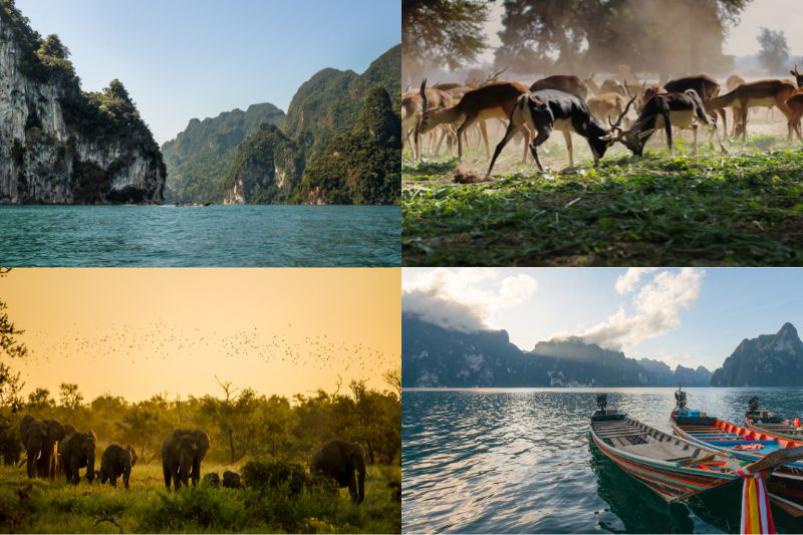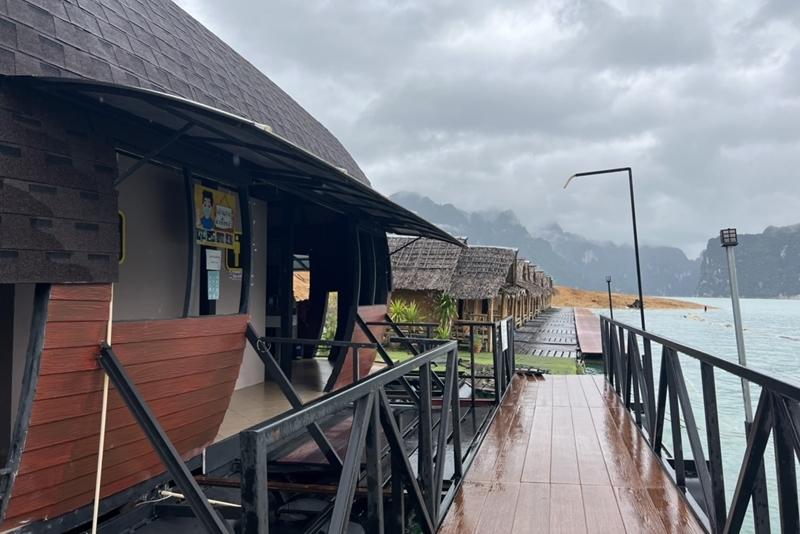
Wildlife You May Encounter When Visiting Cheow Lan Dam: Pristine Forests and Rare Animals
Wildlife You May Encounter When Visiting Cheow Lan Dam: Pristine Forests and Rare Animals
Cheow Lan Dam, also known as Ratchaprapa Dam, located in Surat Thani Province, is one of the most beautiful tourist destinations in southern Thailand. Surrounded by glass-like lakes, limestone mountains, and lush forests, Cheow Lan Dam provides a rare opportunity to witness a variety of wildlife, from common animals to rare species. This makes it a site not only for breathtaking scenery but also for important wildlife conservation.
Wild Elephants
Wild elephants are commonly found in Khao Sok National Park, which surrounds Cheow Lan Dam. Visitors may spot these majestic animals grazing along the forest edge or nearby areas, especially in the early morning or late afternoon. Observing them from a safe distance can be an exciting and memorable experience.Gaur (Indian Bison)
Gaurs, large hoofed animals that live in dense forests, may sometimes be heard or seen grazing in grassy areas near the forest edge. Known for their large size and impressive curved horns, these animals are powerful and highly responsive to disturbances, so observing them requires extra caution.Hornbills
The area around Cheow Lan Dam is home to several hornbill species, such as the Great Hornbill and Rhinoceros Hornbill. With their distinctive calls and striking appearance, hornbills are easily spotted around large trees. They are one of the highlights for wildlife enthusiasts visiting this region.Sambar Deer
Sambar deer usually inhabit grassy and open areas close to water sources. The environment around Cheow Lan Dam is ideal for these animals, and visitors may see them grazing along the pathways or forest edges in the early morning or late afternoon.Marbled Cat
The marbled cat is a rare and elusive species in Thailand. The forested areas of Khao Sok provide a natural habitat for this nocturnal and agile predator. Spotting a marbled cat is a rare and thrilling opportunity for lucky visitors.Pig-tailed Macaque
Pig-tailed macaques are large primates that live in dense forests and dry dipterocarp forests around Khao Sok. Tourists may observe these social animals foraging in trees or along forest edges. Macaques are known to move swiftly and often travel in groups.Reticulated Python
Reticulated pythons are commonly found in tropical and humid forests in Thailand, especially within the Khao Sok region. Although they may seem intimidating, these non-venomous snakes are generally harmless. They are frequently seen near water sources or forest edges.Freshwater Animals
The lake at Cheow Lan Dam itself is a habitat for a variety of freshwater animals, including different species of fish, small amphibians, and even some aquatic birds. This biodiversity adds to the natural richness of Cheow Lan Dam, making it a fascinating spot for wildlife observers interested in aquatic life.
Tips for Wildlife Watching at Cheow Lan Dam
- Use Binoculars: Many wildlife species are cautious and prefer secluded areas. Binoculars can help you observe animals from a safe distance.
- Maintain Silence and Calmness: Most wildlife may respond quickly to loud noises. Keeping quiet and calm is crucial to prevent startling the animals.
- Keep a Safe Distance: For your safety and the well-being of the animals, it is essential to observe them from afar without getting too close or disturbing them.
- Travel with a Guide or Park Ranger: Exploring the forest or wildlife areas is safest with a guide familiar with the trails and wildlife, ensuring a safe and informative experience.
In Summary
Cheow Lan Dam is not only a tranquil and scenic destination but also a rich habitat for diverse wildlife, from rare to more commonly seen animals. Visitors can experience the beauty of nature and observe these fascinating creatures in the lush forests of Khao Sok National Park. Preparing and following wildlife viewing guidelines can make this journey both a memorable and safe adventure.
Recent Tours
Rooms
from ฿3,800 / night
from ฿3,400 / night
from ฿9,000 / night








